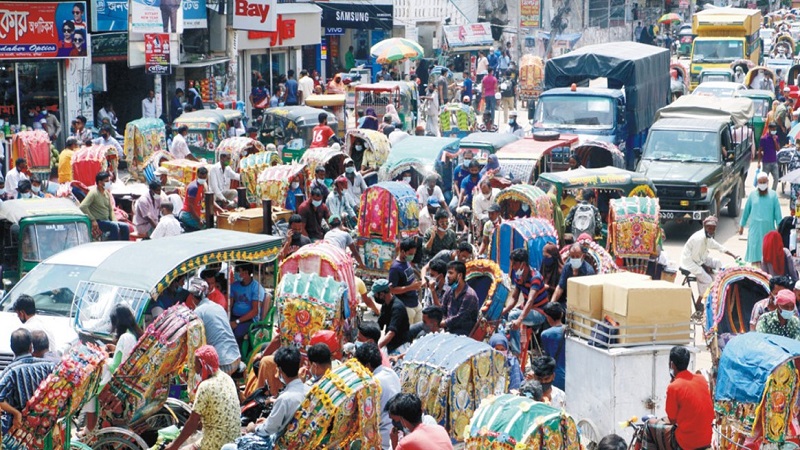Countless families who have lived in the capital and other major cities for years have continued to leave for their rural homes as they have lost their work or income in urban areas because of the COVID-19 crisis.
A number of them said that they could not now afford to live in Dhaka anymore as they lost either their jobs or a substantial portion of their income during the crisis beginning from March, while their expenses went up here.
‘I don’t disagree that many families have left Dhaka due to income loss because of the coronavirus pandemic fallout but there are no studies done to say how many people have actually left,’ said planning minister MA Mannan.
He said that the government was providing relief for poor and subsidy to economic sectors for revival to create employment opportunities.
Several returnees said that they had now no other means for survival in the city and hence they were forced to shift their families to their village homes in order to cope with the situation.
Many residential buildings in the capital’s populous areas like Malibagh, Shantinagar, Moghbazar, Rampura, Mohammadpur, Dhanmondi, Uttara and Mirpur were found with ‘To-Let’ notices hanging during recent visits by this correspondent.
The sudden migration of a huge population from the capital to villages has disrupted the life of other people also in both the city and villages.
Dhaka University economics professor MM Akash told New Age that the return of a huge number of people to rural areas would hit the country’s economy because they had made contribution from their positions over the years in the cities and back home there was nothing ready for them.
‘For a certain time they [returnees] will live on their savings and eventually many of them will join the class of the poor,’ he said.
He advised that the government should invest in rural small and micro economic activities to generate employment and should give subsidy in agriculture.
A press and printing owner in the capital’s Paltan, Azad Hossain, is one of those who were compelled to leave the city where he had been having his family’s livelihood for the last over 12 years.
With an uncertainty about what he would do in his village in Madhupur of Tangail just ahead of Eid-ul-Azha, Azad finally went back as his income saw a drastic fall soon after the pandemic started.
‘I tried my best to stay back in Dhaka but I could not find any alternative livelihood,’ he said in a sad voice.
The planning minister said that the government had been providing food support to the most vulnerable groups of people and allocating subsidised loans for private sector businesses.
‘The government will provide huge loans to certain economic sectors on easy terms with funds from both domestic and foreign sources, which will in turn revive other sectors, too,’ he told New Age.
SM Anwar Parvez, founding president of the Cable Operators Association of Bangladesh, said that roughly two lakh subscribers in the capital to their cable lines from 900 providers suspended their connections since March while COAB had earlier seen a 10 per cent yearly hike in its customers.
He mentioned that they had over 10,00,000 customers across the city.
He suspected that most of those who snapped their cable lines left the city while a few of them might have shifted their residences and did not take the cable connection again.
Palash Hossain, owner of a building in Mohamamdpur said that four of the 36 flats of his building had been vacant since March and no new tenants even appeared to rent them.
Residents said that in the last two months some tenants were seen to have shifted to houses of lower rents as the COVID-19-induced economic downturn had reduced their income.
A recent survey by the Bangladesh Institute of Development Studies said that about 13 per cent people became unemployed in the country due to the COVID-19 pandemic.
It noticed significant negative effects on employment, income and expenditures of people, especially those from low-income groups.
Another survey by Right to Food Bangladesh found that the livelihoods of 98.3 per cent of the country’s poor people were severely affected by the COVID-19 crisis with 87 per cent of them going through a food and nutrition crisis and 5 per cent taking one meal a day as they lost their income due to the pandemic.
It pointed out that before the pandemic 91.6 per cent of the country’s poor had three meals a day and the rest two meals while none had to eat once a day.
According to the study, 7 per cent people were compelled to change their occupation, mostly to farming-related ones, in the meantime.
Urban planners said that Dhaka city was not developed in a planned way to ensure sustainable livelihoods for people.
Bangladesh Institute of Planners’ president Akter Mahmud said that life was abnormally expensive as all the development in last de













